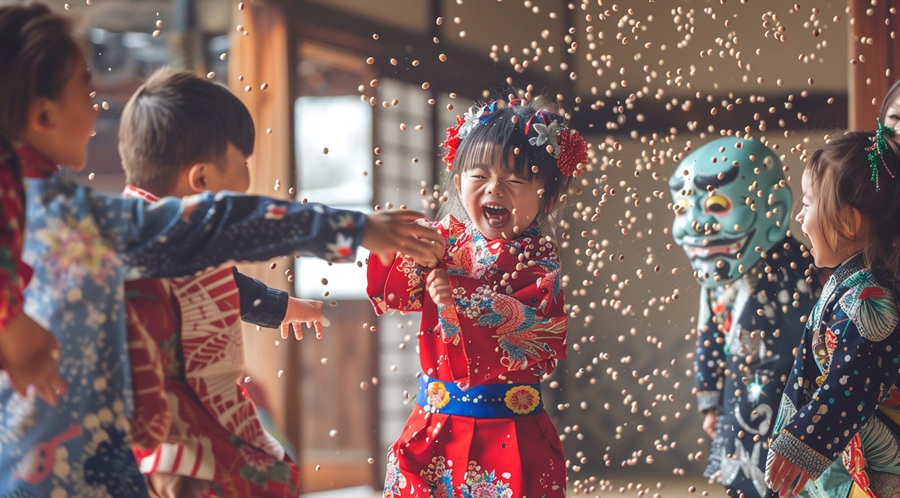
Setsubun
Japanese Name
せつぶん
setsubun
Description
- Setsubun is a traditional Japanese festival held on February 3rd or 4th, marking the day before the beginning of spring according to the old lunar calendar. The main ritual is mamemaki, where roasted soybeans are thrown either out the door or at a family member wearing an oni (demon) mask while shouting, “Oni wa soto! Fuku wa uchi!” (“Demons out! Luck in!”). People eat a special type of sushi roll called ehomaki while facing the lucky direction of the year. Setsubun is meant to drive away evil spirits and invite good fortune, health, and happiness for the coming year. Decorations such as holly leaves and sardine heads are sometimes used to ward off evil. Schools, temples, and shrines often hold public events. It’s both a family-centered and community celebration.
History
- Setsubun originated from ancient Chinese customs brought to Japan during the Heian period (794–1185), called mametsuki, to cleanse away evil spirits at the change of seasons. Initially, it was performed only at the imperial court and among the aristocracy. Over time, the ritual spread to ordinary households and became associated with the start of spring, marking the end of winter. Soybeans were chosen because they were considered to have the power to drive away demons and disease. During the Edo period (1603–1868), the practice of throwing beans and the custom of eating ehomaki became widespread. Today, Setsubun combines Shinto beliefs, folk customs, and community festivities, preserving its symbolic role in protecting families and welcoming fortune.
Learn more Japanese words?
Play our free typing game and master Hiragana & Vocabulary in a Zen atmosphere. 🍵
🎮 Play Game